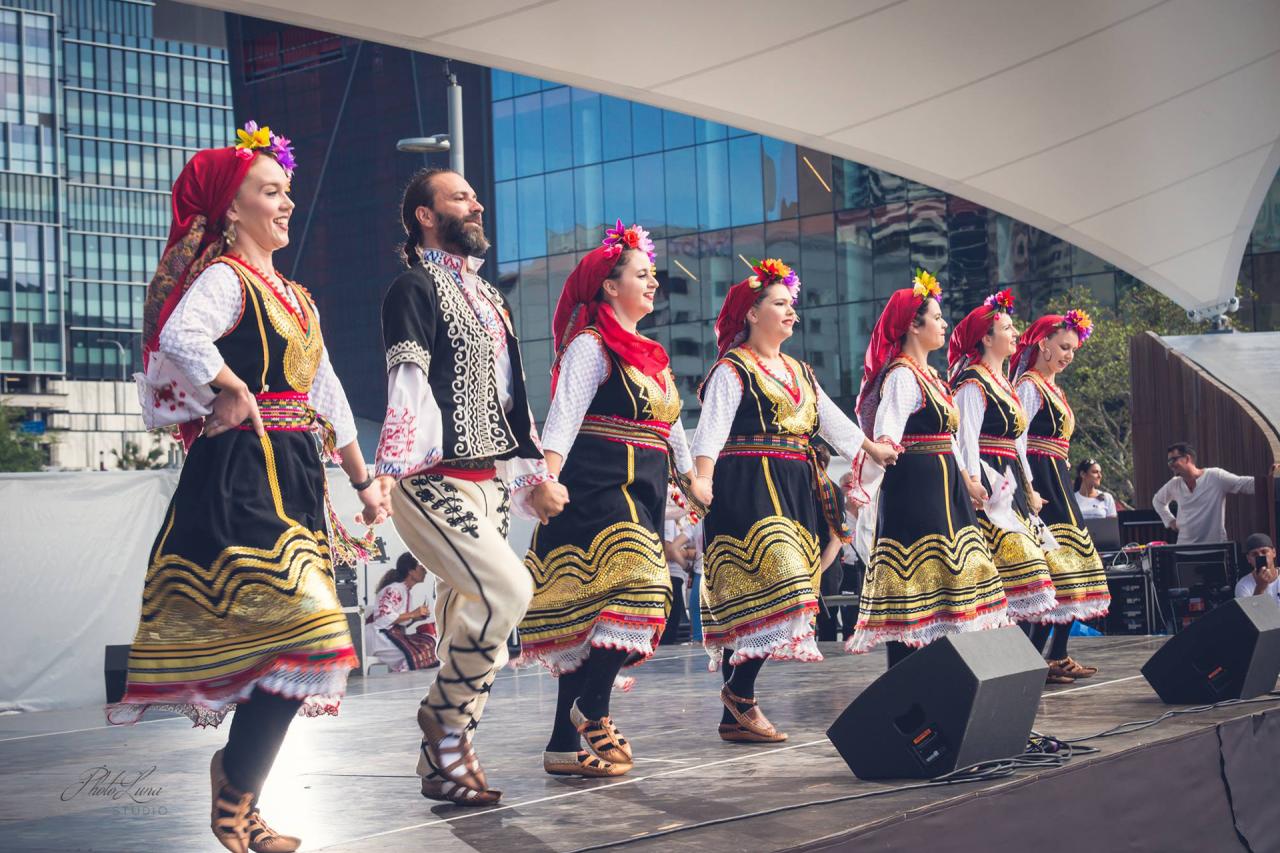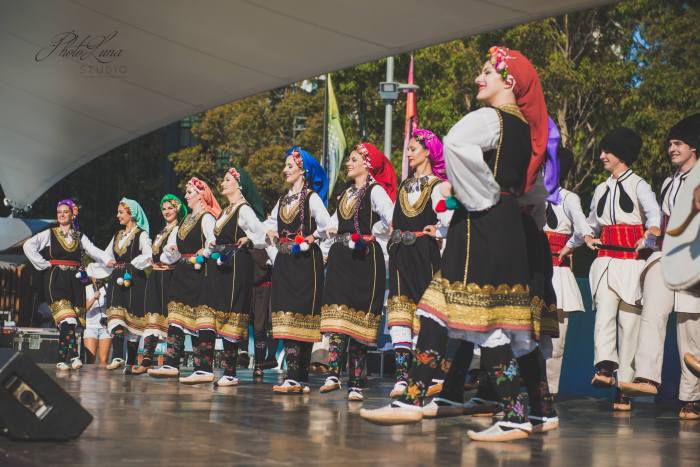Serbian Festival traditions offer a captivating journey through history, faith, and vibrant community. From ancient rituals to modern celebrations, these festivals are more than just events; they’re powerful expressions of Serbian identity, weaving together customs, beliefs, and a shared cultural heritage. This exploration delves into the heart of these celebrations, revealing the stories behind the music, dance, food, and the enduring spirit of the Serbian people.
We’ll uncover the historical roots of key festivals, examining their evolution over centuries and exploring how religious and secular elements intertwine. We’ll also investigate the economic impact of these events, highlighting their role in tourism and local economies. Finally, we’ll see how globalization and social media have shaped modern interpretations, bridging the gap between traditional practices and contemporary experiences both in Serbia and within the global Serbian diaspora.
History and Traditions of Serbian Festivals

Serbian festivals, a vibrant tapestry woven from centuries of history and tradition, offer a captivating glimpse into the nation’s rich cultural heritage. These celebrations, deeply rooted in both religious and secular life, have evolved significantly over time, reflecting the nation’s experiences and transformations. Understanding their historical context reveals a compelling narrative of continuity and change, demonstrating the enduring power of tradition in a constantly evolving world.
Evolution of Major Serbian Festivals
The evolution of Serbian festivals is a fascinating study in cultural adaptation. Many festivals, initially tied to agricultural cycles and pagan rituals, were later integrated into the Christian calendar. For example,Slavs* (celebrations dedicated to ancestors), while retaining elements of their pre-Christian origins, became intertwined with Christian saints’ days. This syncretism is a hallmark of Serbian cultural identity, showcasing a dynamic interplay between old and new beliefs.
The rise of nationalism in the 19th century also significantly influenced festivals, with some becoming focal points for national identity and cultural pride. The communist era saw attempts to suppress religious festivals, but the resurgence of religious observance since the 1990s has led to a renewed emphasis on their traditional forms.
Traditional Customs and Rituals of Three Serbian Festivals
Several Serbian festivals showcase unique customs and rituals.
- Krsna slava* (Saint’s Day), the most important family holiday, involves a celebratory meal, prayers, and the lighting of candles before the family’s patron saint’s icon. The preparation and sharing of the
- slavski kolač* (festive bread) are central to the ceremony.
- Božić* (Christmas), a deeply religious holiday, is celebrated with traditional meals, caroling, and visits to family and friends. The exchange of gifts and the festive atmosphere contribute to its joyous character.
- Vaskrs* (Easter), characterized by the breaking of painted eggs, symbolizes the triumph of life over death. The vibrant colors and symbolic significance of the eggs underscore the religious and cultural importance of the holiday.
Religious and Secular Aspects of Serbian Festival Celebrations
Serbian festivals often blend religious and secular elements seamlessly.
- Krsna slava*, while deeply rooted in religious tradition, also functions as a significant social event, strengthening family ties and community bonds. Similarly,
- Božić* and
- Vaskrs*, though primarily religious holidays, incorporate secular traditions like festive meals and gift-giving, highlighting the intertwining of faith and social practices. This fusion underscores the complex and multifaceted nature of Serbian cultural identity, where religious and secular aspects enrich and complement each other.
Timeline: The Development of Krsna Slava, Serbian Festival
The evolution of Krsna Slava, a pivotal family celebration, illustrates the dynamic interplay of tradition and change within Serbian culture.
| Period | Significant Events and Influences |
|---|---|
| Pre-Christian Slavic Era | Ancestor veneration and pagan rituals likely formed the basis of family patron saint celebrations. |
| Medieval Period (after Christianization) | Syncretism of pagan traditions with Christian saints’ days began. Family patron saints were adopted, blending older beliefs with new religious practices. |
| Ottoman Rule | Krsna Slava served as a crucial marker of Serbian identity and continuity amidst foreign domination. It offered a space for maintaining cultural traditions and social bonds. |
| 19th and 20th Centuries | Nationalist movements further emphasized Krsna Slava’s role in fostering Serbian identity. The communist era saw attempts at suppression, but the tradition persisted. |
| Post-Communist Era | A resurgence of religious observance has led to a renewed emphasis on the traditional forms and significance of Krsna Slava. |
Origins of Serbian Festivals
Understanding the origins of Serbian festivals provides insight into the nation’s historical and cultural development.
| Festival Name | Origin | Key Dates | Significance |
|---|---|---|---|
| Krsna Slava | Syncretism of Slavic ancestor veneration and Christian saints’ days | Varies by family, usually on a saint’s day | Central family holiday, strengthens family ties and maintains cultural identity |
| Božić (Christmas) | Christian celebration of the birth of Jesus Christ | December 25th (Julian calendar) / January 7th (Gregorian calendar) | Major religious holiday, characterized by family gatherings and religious observances |
| Vaskrs (Easter) | Christian celebration of the resurrection of Jesus Christ | Variable date, typically in Spring | Triumph of life over death, symbolized by painted eggs and festive meals |
| Duhovi (Pentecost) | Christian celebration of the descent of the Holy Spirit | 50 days after Easter | Important religious and social occasion, marked by festive gatherings and traditional food |
Popular Serbian Festivals and Their Significance

Serbian festivals are vibrant expressions of a rich cultural heritage, deeply intertwined with history, tradition, and faith. These events aren’t merely celebrations; they’re powerful economic drivers, community builders, and crucial elements in maintaining Serbian identity in a globalized world. Understanding their significance requires exploring both their tangible and intangible impacts.
Five Popular Serbian Festivals and Their Locations and Dates
Serbia boasts a calendar brimming with festivals, each with unique characteristics. These events draw both locals and tourists, contributing significantly to the country’s cultural tourism sector. The following are five prominent examples, showcasing the diversity of Serbian celebrations.
- Krsna Slava (Saint’s Day): Celebrated throughout the year on varying dates depending on the family’s patron saint. This is a deeply personal and family-centered festival, observed across Serbia and among Serbian communities globally.
- Guča Trumpet Festival (Trubački Sabor): Held annually in Guča, usually in August. This world-renowned festival attracts thousands of trumpet players and music lovers.
- Exit Festival: Takes place in Novi Sad in July. This internationally acclaimed music festival draws a massive crowd of international and domestic attendees.
- Beer Fest (Pivski Festival): Held annually in Belgrade, typically in August. This festival celebrates Serbian beer and features live music and entertainment.
- Sretenje (Saint Simeon’s Day): Celebrated on February 15th, this is a national holiday commemorating the adoption of the first Serbian constitution in 1835 and the uprising against the Ottoman Empire in 1804. Celebrations take place nationwide.
Cultural Significance of Serbian Festivals
Serbian festivals play a pivotal role in preserving and transmitting cultural heritage. They are vital spaces for reinforcing social bonds, passing down traditions to younger generations, and fostering a sense of shared identity and belonging. Krsna Slava, for instance, emphasizes family lineage and religious devotion, while the Guča Trumpet Festival showcases a uniquely Serbian musical tradition. Exit Festival, though contemporary, reflects Serbia’s evolving cultural landscape and its integration into the global music scene.
The economic impact of these events is substantial, directly impacting local businesses and indirectly contributing to national economic growth.
Economic Impact of Serbian Festivals
The economic impact of Serbian festivals is considerable. The Guča Trumpet Festival, for example, generates significant revenue for the local community through tourism, accommodation, food and beverage sales, and transportation services. Similar economic benefits are observed at the Exit Festival in Novi Sad and the Beer Fest in Belgrade. These festivals not only attract tourists but also create employment opportunities and boost local businesses.
Data from tourism boards and local chambers of commerce could provide specific figures on revenue generation and employment created by these festivals. For example, Exit Festival’s contribution to Novi Sad’s economy is substantial, evidenced by increased hotel occupancy rates and spending in the local hospitality sector during the festival period.
Atmospheric Description of the Guča Trumpet Festival
Imagine a sun-drenched valley in rural Serbia, a sea of faces under a vibrant sky. The air thrums with the powerful, resonant sound of hundreds of trumpets, a captivating cacophony that blends with the lively chatter of the crowd. The scent of roasted lamb and plum brandy hangs heavy in the air, mingling with the dust kicked up by dancing feet.
Brightly colored traditional clothing flashes amidst the throngs, a kaleidoscope of movement and energy. The scene is a potent mix of raw musical talent, fervent celebration, and a profound sense of community. It’s a vibrant spectacle that captures the essence of Serbian spirit and cultural pride.
Traditional Food, Music, and Dance Associated with Three Festivals
- Krsna Slava: Traditional foods include slavski kolač (a special celebratory bread), pečenje (roasted meat), and various other dishes depending on family traditions. Music is typically religious chants or traditional folk songs, and dancing is often family-oriented and informal.
- Guča Trumpet Festival: The food is centered around traditional Serbian barbeque ( roštilj), including pljeskavica (Serbian burger) and ćevapi (grilled minced meat). The music is exclusively trumpet-based, with various bands competing and performing. The dance is generally informal, with spontaneous movements often mirroring the rhythm of the music.
- Exit Festival: The food scene is diverse, reflecting the international nature of the festival, but you can still find traditional Serbian fare alongside international options. The music spans various genres, from electronic to rock, and the dancing is as varied as the musical offerings.
Serbian festivals are a testament to the enduring power of cultural heritage. They’re a vibrant blend of tradition and adaptation, reflecting the resilience and dynamism of Serbian culture. By understanding the history, significance, and modern expressions of these celebrations, we gain a deeper appreciation for the richness and complexity of Serbian identity and its enduring connection to its past.
The sensory experiences, the communal spirit, and the enduring legacy of these festivals create a lasting impression, showcasing the beauty and vitality of Serbian culture on a global stage.